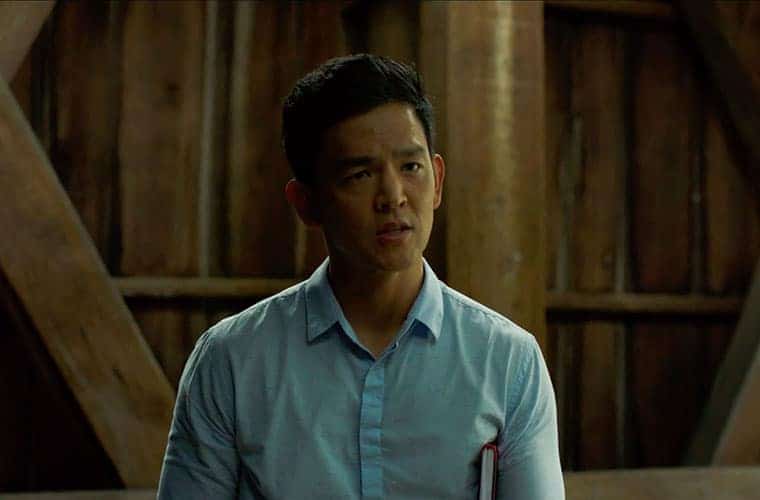For many moviegoers, visual storytelling is an afterthought when debating a film’s merit. While studying the plot, the characters, or the messages embedded in films, we often forget that the camera is a character in and of itself. Cinematography is the perfect compliment to captivating dialogue or emotional acting because it immerses you in our characters’ lives.
Through the camera, we’re drawn deeper into the story, experiencing the melancholy, ecstasy, or vibrancy that our characters face. While we often relegate cinematography to the perfect shots they produce, it should be remembered that perfect shots are more than just beautiful landscapes or impeccable lighting, rather, great cinematography is essential to the story and essential to the emotions and feelings we experience.
Furthermore, we often don’t consider the role that location and set design play in film. Where our characters exist is vital to understanding their plight. From their location or the things that surround them, we can learn how certain characters process information. Often times, location or set design reflects our characters situations or shows how our characters ought to evolve.
Writer-director Kogonada is a master visual storyteller. Before captivating the hearts of indie fans everywhere with last year’s Columbus, Kogonada established himself as a brilliant video essayist. While his essays cover a wide spectrum of themes and ideas, Kogonada’s essays concerning visual storytelling are most impressive because they cover a wide variety of directors’ visual styles throughout their films. In these short, non-narrated, hyper-edited videos, Kogonada analyzes how different directors are consistent in their usage of cinematography in order to convey myriad emotions or themes.
Kogonada’s unparalleled understanding of visual storytelling goes beyond analyzing other directors’ work. Through all his years analyzing different directors’ visual styles, he established his own method of visual storytelling in Columbus. The cinematography and locations in Columbus are captivating, but this beauty does not just stand for merely for beauty’s sake. Kogonada delivers a rich, complex character study exemplified by brilliant visual storytelling that brings us deep into our characters’ musings.
In Columbus, Haley Lu Richardson and John Cho star as Casey and Jin, who are two wildly different people seeking to find purpose and agency in their lives. Columbus presents a thoughtful story, introspective characters, and emotional acting all bound to contemplative locations which are captured through brilliant camera work. The story and characters are great, but we get to learn more about them through their shared interest in the modernist architecture that Kogonada features. These locations reflect the complexities of our characters, providing a comprehensive way to understand their situations. Furthermore, the location and set design, allow Kogonada to ground his story in a realistic world. Our characters aren’t just musing in beautiful landscapes, they’re growing through fairly regular visual spaces. The mundanity of visual space brings this world and our characters closer together.
Check out these six video essays that showcase Kogonada’s mastery of visual storytelling.
Wes Anderson // Centered
In this video essay, Kogonada shows how director Wes Anderson will often keep the main character or focus of attention in the dead center of the screen. While not a traditional method, by doing so, we notice the focus of the scene first, drawing us deeper into the action.
Kubrick // One-Point Perspective
In the graphic arts, the one-point perspective means that a drawing or photograph only has one vanishing point on the horizon. This perspective is best used when showing long, horizontal landscapes such as hallways or railroads. Here, Kogonada examines that Stanley Kubrick often uses the one-point perspective to show the weight or gravity that his characters face. We see Kubrick’s characters running toward victims, away from attackers, or facing a giant alien. By using the one-point perspective, the audience can understand how dangerous or intimidating these situations are for our characters.
Ozu // Passageways
For many filmmakers, hallways or passageways are a means for characters to find suspense or danger, but Kogonada remarks that Ozu’s characters use alleys or hallways as part of modern life. Ozu uses passageways to keep characters grounded in reality, so that his characters may make transitions through life. Visual space here is found in mundane, everyday locations.
Tarantino // From Below
Shots from below place our focus of attention on our characters’ faces. We’re focused on seeing our characters’ reactions to things in the trunk, things in a briefcase, or engravings on heads. Tarantino utilizes shots from below often because he wants us to focus on his characters while his characters are focused on something else. Through this, we experience what the characters are experiencing, understanding their excitement, sadness, or shock.
Breaking Bad // POV
In Breaking Bad, the point-of-view (POV) shot is captured our characters’ point of view from random, everyday objects like refrigerators, washing machines, or even Roombas. By capturing our characters’ perspectives from everyday objects, the show is further grounded in realism, allowing audiences to connect deeper with our characters. Kogonada splices POV shots in Breaking Bad together so that we can experience the realistic cinematography first hand.
Subconscious Reflections
In a video essay about Columbus, Mikolaj Kacpzrak does his best Kogonada impression with a brilliant video that examines how two characters reflect each other in their everyday lives. It also demonstrates how Kogonada has adopted visual styles from Wes Anderson and Ozu, implementing these forms of visual storytelling to further the musings of our characters.

